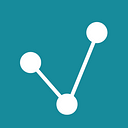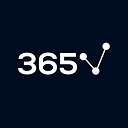Best Python Libraries for Data Science in 2022 | 365 Data Science
Python is one of the most widely used programming languages for data science — securing third place in StackOverflow’s 2021 Developer Survey. What makes the language so popular is its ocean of packages that can be used to perform a variety of data science tasks, including machine learning, data preprocessing, data analysis, and data visualization. Not to mention, it’s an extremely in-demand tool for anyone looking to start a career in data science.
However, as a beginner in the industry, it can be daunting to understand where to start, especially with the abundance of resources at your disposal. Python alone has over 100,000 built-in libraries and it simply isn’t possible to learn all of them.
In this article, we will walk you through 8 of the most useful libraries for data science that will boost your skills. We will also provide learning material to help you gain hands-on experience with these packages.
Data Collection
Data collection is the first step in the data science lifecycle. Many companies rely on external data, from social media platforms like Twitter and Facebook to drive major decision-making. This helps them understand where market demand lies, so they can then work to position their brand accordingly.
External data is generally collected in 2 ways:
- With the use of APIs
- Through web scraping
Some platforms have built-in APIs that make it easy for you to collect and load all their data easily even without having to code. However, most large directories, review sites, and social media platforms don’t allow external users to gain access that easily.
This is where web scraping comes in. Simply put, it is the process of crawling the Internet using automated tools to extract information quickly. Through this, you can collect hundreds of thousands of data points at once.
Python has many built-in packages that you can use to crawl the web. Let’s focus on 2 of the most popular options: BeautifulSoup and Selenium.
BeautifulSoup
If you are a beginner to Python programming, you can start learning web scraping using BeautifulSoup — a simple library that can quickly pull data and extract elements from HTML webpages. If you are trying to scrape a website that isn’t very complex and doesn’t have many bot protection mechanisms in place, then this Python library is enough for you to get the job done.
If you’re curious to learn more, our Web Scraping and API Fundamentals in Python course will walk you through the basics.
Selenium
Selenium is a framework designed to perform browser automation. This means that if a website has many different elements and bot protection mechanisms in place, you can go in and navigate through pages as though a human is doing it.
Programmers often combine the 2 Python libraries. Selenium helps with quick navigation, while BeautifulSoup helps to pull out the required data.
So, once you learn how to scrape simple sites with BeautifulSoup, you can start learning Selenium to deal with more complex applications.
Data Preprocessing & Data Analysis
Working with data is tricky as it can be riddled with noise and errors. Fortunately, there are ways to clean your datasets — like the most popular Python library for data preprocessing and analysis, pandas.
Pandas
This package is so widely used by data scientists because:
- Pandas supports many file formats. You can easily read data from a text file, Excel spreadsheet, or a ‘.csv’ file, and load it into a pandas data frame in just a few seconds.
- It allows users to perform SQL-like operations such as merging, joining, and concatenating data frames with each other. You can also easily group and sort data, which is very useful when performing exploratory analysis.
- Finally, the library allows users to perform operations on an entire data frame at once. You can easily filter multiple columns based on the same criteria or perform calculations on all data across different columns at once. Without pandas, you will need to code these operations manually, which can be incredibly time-consuming.
These reasons only scratch the surface of why pandas is one of the top Python libraries for data science. It is incredibly useful to understand data manipulation, pre-processing, and analysis.
Want to know how to work with it? Our Data Cleaning and Preprocessing with pandas course is a great place to start.
Data Visualization
Data visualization plays an important role in your understanding of data, as well as telling a meaningful story with it — a vital data science skill. There are many libraries in Python that can help you create beautiful, intuitive visuals. We will highlight 2 of them due to stability and ease of use: Matplotlib and Seaborn.
Matplotlib
Matplotlib is the top data visualization library in Python. You can create bar charts, scatter plots, histograms, and box plots in just a few lines of code.
One advantage of Matplotlib is that the graphs are highly customizable, so your visualizations are specifically catered to your organization’s needs.
Seaborn
Seaborn is a high-level, easy-to-use Python visualization package based on Matplotlib. It is a great choice for beginners who are new to programming. With this library, you can create visualizations using just a single line of code!
Moreover, Seaborn is also better integrated to work with pandas data frames and the charts generated are more visually appealing.
Machine Learning
If you are interested in becoming a machine learning engineer, then you need Scikit-Learn — it is top of the list of most useful Python open-source libraries.
Scikit-Learn
Scikit-Learn has 100+ models that allow you to perform both supervised and unsupervised machine learning. This library also has estimators that allow you to perform tasks like data encoding and feature extraction, as well as popular features such as:
- Machine learning algorithms: Scikit-Learn has a vast array of algorithms you can pick from, like algorithms like linear regression, decision trees, and SVMs.
- Hyperparameter tuning: The package allows users to pass arguments into estimator classes in order to change parameters. This package also provides functions that can help loop through a list of possible parameters, allowing you to identify the best ones.
- Feature selection: When building a machine learning model, it is vital to select your input features carefully as those with a higher impact on the target variable are more important to your model. With Scikit-Learn, you can remove redundant variables.
If you’re interested in this field, our Machine Learning in Python course will take you through the complete workflow.
Deep Learning
Finally, we will go through 2 packages that can help you perform deep learning tasks with Python: TensorFlow and Keras.
Deep learning isn’t always part of the data science workflow. In many cases, shallow learning algorithms (such as linear regression and K-means clustering) can be built using Scikit-Learn are sufficient to get the job done. However, if you ever need to make predictions based on image and text data, you need to have a working knowledge of deep learning algorithms.
Sometimes, organizations require data scientists to create chatbots or build threat-detection systems. In these cases, deep learning skills will come in handy.
TensorFlow
TensorFlow is an open-source library released by Google and is arguably the best deep learning framework around today.
You can easily install it in Python and use it to build a variety of deep learning models. It is a powerful, fast library that can scale large datasets with ease.
One disadvantage is that it is a low-level library with a steep learning curve. In order to properly use it, you need to understand some of the underlying math behind the models you build. Additionally, you will need to know how to perform tasks like matrix manipulation and implement array operations in Python.
However, once you get past the initial learning curve, Tensorflow is a great addition to your data science portfolio. Working knowledge of this library is highly in-demand withTensorFlow skills being the most prevalent in job listings as compared to all other deep learning frameworks.
If you’re interested in building deep learning models, our Deep Learning with TensorFlow 2 course will teach you how.
Keras
Keras is a high-level deep learning framework built on top of Tensorflow but is slower than its parent library in terms of performance. On the flip side, it is a lot simpler to learn.
Keras has many functions that allow you to build and train deep learning models easily. Once you have an understanding of the different layers, you can easily implement each of them with just a single line of code.
Demonstrating skills using Python libraries like TensorFlow and Keras will make your resume stand out to potential employers as it showcases your ability to perform tasks that exceed their expectations.
Best Python Libraries for Data Science: Next Steps
Finding your way during your first steps towards becoming a data scientist is overwhelming, especially if you’re a true beginning or looking to switch career paths. But you can use our list of the most popular Python libraries as a learning roadmap to enhance your skills in each step of the data science lifecycle.
However, the data science workflow is vast and complex. If you want to impress your future employers, there is more work to be done. Thankfully, you’ve come to the right place!
Our 365 Data Science Program offers self-paced courses led by renowned industry experts. Starting from the very basics all the way to advanced specialization, you will learn by doing with a myriad of practical exercises and real-world business cases. If you want to see how the training works, start with a selection of free lessons by signing up below.
Originally published at https://365datascience.com on February 9, 2022.

